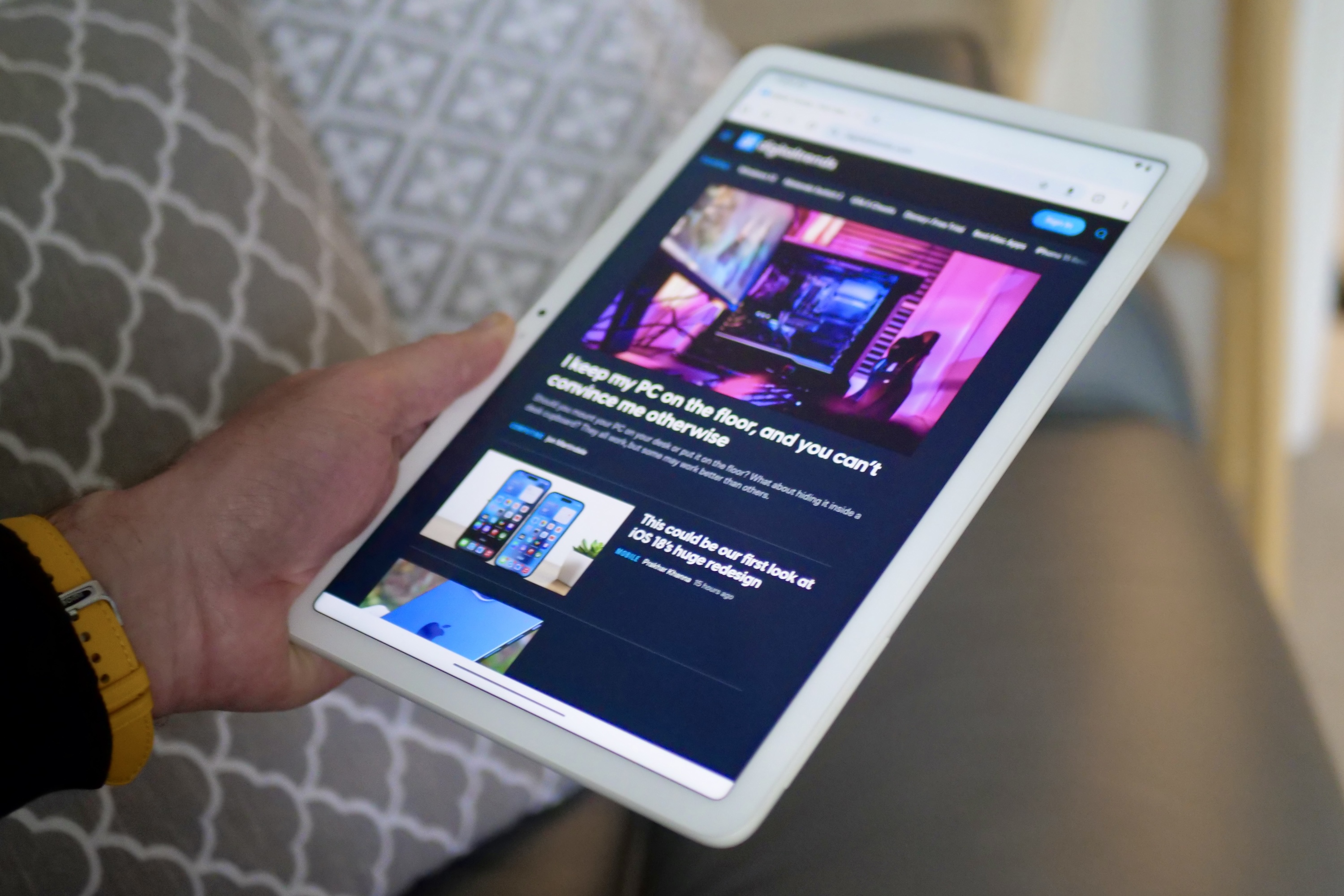The fate of Google’s Pixel Tablet seems uncertain at this point, with multiple leaks suggesting that a successor was put on ice. It seems, however, that a Pixel Tablet 2 moved into advanced stages of development with some neat upgrades before it was unceremoniously axed.
The folks over at Android Authority, citing internal documents, report that the second-generation Pixel Tablet would’ve arrived armed with the Tensor G4 silicon, which also powers the Google Pixel 9 series smartphones. Google was also reportedly eyeing a cellular version with a Samsung Exynos 5G modem for the slate.
The biggest upgrade, however, would have been the display. The Pixel Tablet was apparently lined up for a 120Hz refresh rate screen, alongside a slight bump in the peak brightness figures.
The current-gen Pixel Tablet offers a 60Hz LCD screen, which is arguably subpar for the asking price of $499 at the very minimum. “Scrolling through menus, apps, etc., looks slow and choppy on the Pixel Tablet — as do any system animations,” said the Digital Trends review of the slate.
It certainly didn’t help that the software was brimming with bugs, the battery life was underwhelming, and the overall design was far less functionally thoughtful than what one expects from the Pixel team.

Google is also said to have earmarked imaging upgrades for the Pixel Tablet 2. The front camera was reportedly upgraded to a 10-megapixel sensor (up from 8-megapixel on the first-gen Pixel Tablet), while the rear camera switched from an 8-megapixel unit to an 11-megapixel snapper.
“The last upgrade Google was going to bring to the tablet was support for DisplayPort output up to 4K,” adds the report. The company was reportedly planning an updated lineup of accessories for the tablet, including a keyboard case, as well.
The other noteworthy improvement was a bump in the battery size, going from 6,900mAh to 7,200mAh capacity. That’s not exactly substantial, but for a tablet plagued by battery efficiency woes, any progress would have been welcome.
Notably, the company hasn’t entirely abandoned its tablet ambitions yet. In fact, work on a supposed Pixel Tablet 3 is reportedly underway, and a souped-up version targeting a 2026 launch is also said to be in the pipeline.

What’s worrisome is Google’s historically lackadaisical approach to committing to a form factor and making iterative upgrades to it in the long run. The Pixel Tablet falls into one such category, even though Google has moved firmly into an adjacent one with its recent focus on folding phones — most recently, the Google Pixel 9 Pro Fold.
Android, despite making significant progress with foldable-first software optimizations, still isn’t quite ready for tablet computing. However, it seems the company’s solution to that laggardness would be rather shocking.
As per Android Authority, Google is planning to unify Chrome OS into Android in hopes of competing with Apple’s iPad and the iPad platform. Will that be enough to save the Pixel Tablet hopes? Only time will tell.
In hindsight, Google could snag two trophies in a single attempt by concentrating the efforts on maintaining two ailing platforms and injecting more energy into a unified Android-based architecture for large-screen devices.


